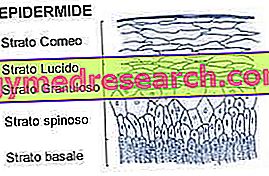
What is Fabrazyme?
Fabrazyme is a solution for intravenous infusion (drip into a vein), which contains the active substance agalsidase beta.
What is Fabrazyme used for?
Fabrazyme is used to treat patients with Fabry disease, a rare inherited condition. Patients suffering from this disease present a deficiency of the enzyme called alpha-galactosidase A. This enzyme normally breaks down the lipid globotriaosylceramide (GL-3). If this enzyme is deficient, GL-3 cannot be broken down and accumulates in the body's cells, such as kidney cells.
Patients with this disease have a wide range of symptoms, including serious disorders, such as kidney failure, heart problems and stroke.
Given the small number of patients suffering from this disease, it was considered "rare" and, on 8 August 2000, Fabrazyme was described as an "orphan medicine" (a medicine used for rare diseases).
The medicine can only be obtained with a prescription.
How is Fabrazyme used?
Only a doctor experienced in treating patients with Fabry disease or other hereditary metabolic disorders can prescribe Fabrazyme. The dose of Fabrazyme is 1 mg per kilo of body weight, given once every two weeks as an intravenous infusion. The initial infusion rate should not exceed 0.25 mg per minute (15 mg per hour), to reduce the risk of infusion-related reactions. The infusion rate can be gradually increased in subsequent infusions. One study looked at Fabrazyme when given to children and came to the conclusion that the medicine could be given to children from the age of eight to 16 years at the same dose. Patients with severe kidney injury may respond less to treatment. Fabrazyme is intended for long-term use.
How does Fabrazyme work?
Fabrazyme enables enzyme replacement therapy to be implemented. This type of therapy provides patients with the enzyme they lack. Fabrazyme is intended to replace the enzyme alpha-galactosidase A, which people with Fabry disease lack. The active substance of Fabrazyme is agalsidase beta, a copy of the human form of the enzyme produced by a method known as "recombinant DNA technology": the enzyme is produced by a cell into which a gene has been introduced (DNA) which makes it possible for it to be generated. This replacement enzyme promotes the breakdown of GL-3 and prevents its accumulation in the patient's cells.
What studies have been performed on Fabrazyme?
Three clinical studies were presented, involving 73 adult patients. In the main study, Fabrazyme was compared to a placebo (a dummy treatment) in 58 patients, measuring the effects of the drug on the elimination of GL-3 from renal cells.
The efficacy of Fabrazyme has also been examined in 16 children between eight and 16 years of age, suffering from Fabry's disease.
What benefit has Fabrazyme shown during the studies?
In the main study, Fabrazyme eliminated GL-3 from renal cells very substantially and almost completed after 20 weeks of treatment. 69% of patients treated with Fabrazyme had the best lipid elimination levels, compared to null effects found in the placebo group. This could lead to an improvement in symptoms or a stabilization of the disease.
Even in children treated with Fabrazyme a decrease in blood GL-3 levels was found, with all children reaching normal levels after 20 weeks of treatment. In addition, there has been an improvement in the symptoms and quality of life of children.
What is the risk associated with Fabrazyme?
During the studies, the most common side effects (in over one in 10 patients) of Fabrazyme are caused by the infusion rather than by the medicine itself. The most common reactions are fever and chills. Other common side effects were: headache, paraesthesia (abnormal sensations, such as tingling and tingling), nausea, vomiting, redness and cold sensation. The side effects recorded in children were similar to those seen in adults. For the full list of all side effects reported with Fabrazyme, see the Package Leaflet.
Patients taking Fabrazyme may develop antibodies (proteins produced as a reaction to Fabrazyme, which can affect treatment).
Fabrazyme should not be used in people who may be hypersensitive (allergic) to agalsidase beta or the other ingredients of the medicine.
Why has Fabrazyme been approved?
The Committee for Medicinal Products for Human Use (CHMP) considered that for patients with Fabry disease, treatment with Fabrazyme can produce long-term clinical benefits. The CHMP considered that the benefits of Fabrazyme outweigh the risks in the case of long-term enzyme replacement therapy in patients with a confirmed diagnosis of Fabry disease, and therefore recommended that it be given marketing authorization.
Fabrazyme was initially authorized in exceptional circumstances because, as it is used to treat a rare disease, the data available at the time of approval was limited.
Since the manufacturer provided the additional information requested, the condition referring to "exceptional circumstances" was removed on 6 February 2008.
More information on Fabrazyme
On 3 August 2001, the European Commission granted a marketing authorization for Fabrazyme to Genzyme Europe BV valid throughout the European Union. On 3 August 2006, this authorization was renewed.
Registration of the status of Fabrazyme as an orphan medicine is available here.
You can consult the full version of the evaluation (EPAR) is available here.
Last update of this summary: 02 - 2008



